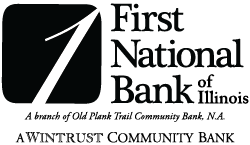Pay Off Debt With These 4 Proven Strategies
Pay Off Debt With These 4 Proven Strategies
As the cost of goods and services increases, so too does the average American’s debt. In fact, in the third quarter of 2024, total household debt increased by $147 billion to $17.94 trillion, with an increase of $24 billion in credit card balances alone.*
Managing debt of any amount can feel intimidating, but paying it off is all about planning. Luckily, several debt repayment options are available for you to pick from, and the right choice for every style is out there. With the right tools, a solid strategy, and perseverance, you can get your debt under control.
Getting started
Looking at your current budget or expenses is always a good place to start. From there, you’ll be able to determine where you can cut back on extra costs and put more money toward your repayment plan. This exercise will also give you a good idea of how much you can afford to put toward your debts each month. When going over your budget, be sure that you can afford to cover at least the monthly minimums on all of your debts before picking a repayment plan that requires you to pay more toward any particular debts.
Once that’s done, pick the best debt repayment option for your budget, time frame, and personality. Each comes with its own perks, so any one of them will help you reach your ultimate goal — being debt free — in a smart way.
The Repayment Plan: Debt Avalanche
The Basics: With a debt avalanche approach, your goal will be to prioritize the debts that accrue the highest interest rates. To do that, you’ll need to start by taking stock of all your different debts in one spreadsheet or list and placing them in order from the highest interest rate to the lowest. The debt with the highest rate will be the debt that you work on paying down first. Once that’s done, you move on to the debt with the second-highest interest rate, and so on down the list until you get every debt paid off.
The Benefits: Paying off your high-interest debts first will likely save you the most money over the long haul.
The Repayment Plan: Debt Snowball
The Basics: Unlike the debt avalanche approach, a debt snowball repayment plan prioritizes your debts with the smallest amounts first. As you would with the debt avalanche strategy, you’ll start by organizing your debts, but this time you’ll be listing them in order from the smallest amount to the highest, regardless of interest rate. As you pay off each small debt, you move on to the larger ones, working your way up to the most expensive ones.
The Benefits: If you appreciate crossing things off your to-do list quickly, a debt snowball approach to debt repayment allows you to pay off smaller debts swiftly before moving on to the larger, time-consuming, and expensive ones. For some, small victories along the way provide motivation to get to the finish line.
The Repayment Plan: Refinancing
The Basics: Refinancing means replacing an existing debt with a new one, and in some cases, it can be quite beneficial. Start by researching your interest rates, then see whether any loans offer better terms. Be sure you understand the terms of your current debts, since some come with penalties for paying them off more quickly than the term limits. Also, double-check how much time you have left on your current debts. Refinancing to a lower-interest loan for a longer period of time might not save you any money if you’re close to repaying your original one.
The Benefits: Refinancing high-interest loans to a loan with a lower interest rate can save you significant money over the life of the loan.
The Repayment Plan: Debt Snowflake
The Basics: The debt snowflake approach can be used as a supplement to any larger debt repayment strategies. The concept is simple: Take any “found” money and apply it to your original debt repayment plan. This money might come from birthday gifts, work bonuses, unexpected rebates, or anything else where you suddenly find yourself with money you hadn’t counted on.
The Benefits: Adding the debt snowflake approach to your repayment plan allows you to optimize small cash surprises by putting them toward paying down your debts — and avoiding as much interest as possible — more quickly.
If your debt ever feels overwhelming, first, remember that you’re not alone, and second, that a little planning can go a long way.
Make debt payments easier with Bill Pay.1 Choose from one of our three most popular checking accounts. You can open online in minutes!
*“Household Debt Ticks Up to $17.94 Trillion; Delinquency Rates Remain Elevated,” Federal Reserve Bank of New York, Q3 2024.
1. Digital Banking Services. Online or mobile banking required to access Zelle®. Internet/mobile connectivity required. Mobile banking required to access remote deposit capture. Deposits made through mobile banking or remote deposit capture are subject to deposit limits & funds are typically available by next business day. Deposit limits may change at any time. Third-party message/data rates & other restrictions may apply. For more information go to wintrust.com/agreement-and-disclosure.





